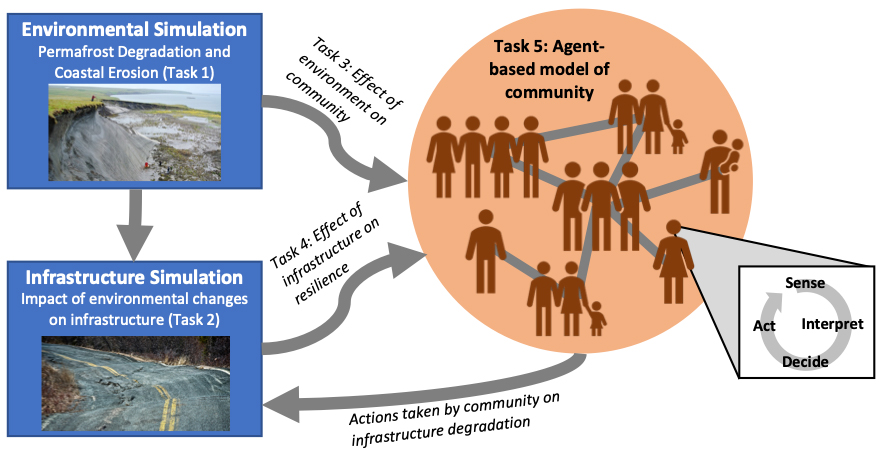Prediction Model for Adaptation of Civil infrastructures and Sociodemographic and Cultural Resilience of Communities
In addition to developing an infrastructure hazard map, we will also develop a holistic and predictive model for the adaptation of civil infrastructures and the sociodemographic and cultural resilience of communities to future and continued permafrost degradation and coastal erosion for the ultimate goal of advancing Arctic region’s prosperity.
To accomplish this goal, the models and outcomes in Tasks 1 to 4 will first be integrated to predict how communities in the North Slope Borough are impacted by infrastructure disruptions in various possible climate scenarios. The integration of models from Tasks 1 to 4 will be accomplished through a numerical simulation of environment and infrastructure combined with an agent-based model (shown below). Agent-based modeling is a powerful tool for simulating systems in which different entities (or agents) function using a variety of information, objectives, and abilities. Leveraging agent-based modeling in this project will enable rapid simulation of the detailed human impact for a variety of future climate scenarios. Every agent will represent one human being.
Although it is not feasible to anticipate the exact details of future infrastructure technologies or local mitigation strategies, it is possible to estimate and simulate the characteristics of these technologies. We will examine trends to estimate how much the cost and effectiveness of local mitigation strategies are likely to change in the future. The outcomes of these simulations will enable the focused creation of transformational technologies to achieve future Arctic prosperity.
